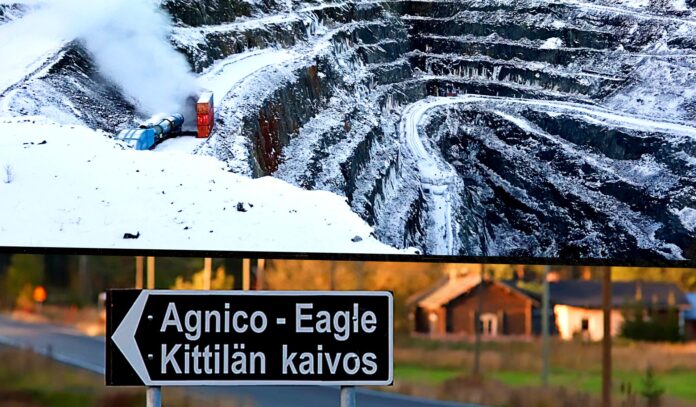Nokia and Telia have combined to deploy a private 5G network for Canada-based Agnico Eagle Mines in Finland. The new 5G standalone (SA) setup will support above and below ground mining operations at the firm’s Kittilä mine in the Lapland province of Finland, billed as the largest primary gold producer in Europe.
Finnish tower operator Digita is also engaged in the project, via operator Telia Finland. The Kittilä mine is located 900 kilometres north of Helsinki, and 150 kilometres north of the Arctic circle. The new private 5G network will connect people, equipment, sensors, devices, and vehicles, at depths of up to one kilometre across the mine’s tunnel system.
The solution uses Nokia’s wide-area Modular Private Wireless (MPW) solution, rather than its local-area plug-and-play Digital Automation Cloud. Nokia is providing radio access network (RAN) equipment, in the form of its AirScale line of base stations, as well as the core network (Nokia Compact Mobility Unit), and sundry edge compute functions.
The network will be deployed in phases, said Nokia, and will be completed in October 2022. A statement said: “The Kittilä mine will benefit from real-time data processing at the network edge, supporting important business Industry 4.0 use cases, such as autonomous vehicles, high-precision positioning, and group communications.”
Tommi Kankkunen, general manager at the Kittilä mine, commented: “Having already piloted autonomous and remotely controlled machinery in recent years, we chose to work with Nokia, Telia and Digita to deliver capabilities for the next phase of our digital transformation journey. We want to innovate by using the latest technologies and will leverage… [private 5G] to enhance operational efficiency and support the highest level of safety.”
Nokia claims to have more than 380 enterprise customers of industrial-grade wireless private networks globally, including more than 35 mining customers. Stephan Litjens, head of enterprise solutions at Nokia, said: “Nokia industrial private wireless networks provide secure, reliable connectivity to meet the stringent operational demands of today’s mining industry, and 5G enables even greater levels of performance.”
Nokia is closely engaged with country-mate Telia, invariably. The pair combined on enterprise-geared 5G in the city of Oulu, Nokia’s home town, as far back as 2018, to serve smart city and industrial applications. The duo worked with US chip-maker Intel to test machine vision technology on a production line at a Nokia factory in the city the same year, using 5G RAN in the 28 GHz frequency band.
Meanwhile, the state-owned Technical Research Centre of Finland (VTT) is coordinating a joint research and development project with Nokia, Telia, and Swedish mining company Sandvik around industrial private 5G networks, edge computing, and artificial intelligence (AI) to enable digital transformation in the underground mining sector.
The Next Generation Mining (NGMining) project, funded by Business Finland, will seek to build a series of “experimental systems”, as proofs-of-concept, to test integrated connectivity solutions in harsh underground mining environments. The Finnish industrial innovation group, Sustainable Industries X (SIX), will collaborate to export the work on autonomous machines to other industries.
Jari Collin, chief technology officer at Telia in Finland, said: “This deployment continues our work with Nokia and Digita to deliver 5G SA private wireless networks in Finland to support the growing digital economy in the country.”
Telia has launched a private LTE and 5G network solution for enterprises in Norway using its licensed spectrum, otherwise used for its public network services. It follows the launch of the same service in Sweden in September. The offer, marketed under the banner Enterprise Mobile Network (EMN), has been picked up by mining companies, notably.
It has deployed with mining companies Boliden and Zinkgruvan and forestry group Södra in Sweden. It has also engaged with Ericsson and Afry to connect a transformer factory belonging to Hitachi ABB Power Grids in Ludvika, in Sweden, and supplied an EMN-style deal for a signaling system in the Oslo Metro – the first time cellular has been used to control subway trains, it said.

